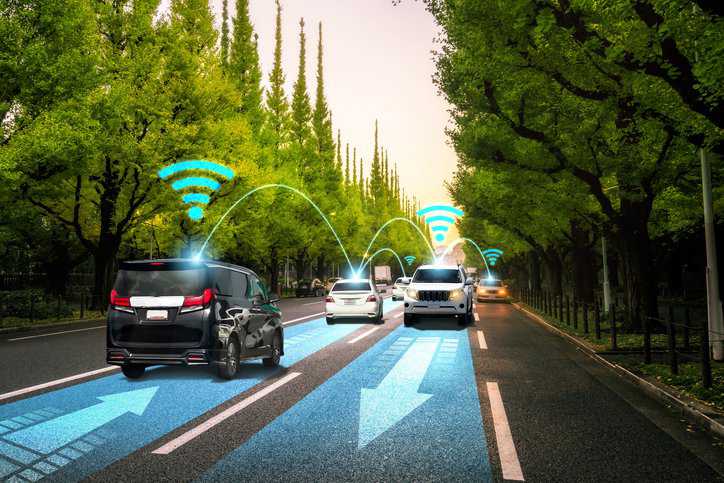The concept of transferring power without wires has been around since the late 1890s. Nikola Tesla was able to light electric bulbs wirelessly at his Colorado Springs Lab using electrodynamic induction (resonant inductive coupling). Inductive wireless power transfer offers several benefits over wired connection. It is applied in numerous applications such as wearable electronics, mobile phone chargers, health care, and automotive industry. ISO 19363:2020— Electrically Propelled Road Vehicles – Magnetic Field Wireless Power Transfer – Safety And Interoperability Requirements specifies requirements for on-board components of a wireless power transfer systems of electrically propelled road vehicles.
How Does Wireless Power Transfer (WPT) Work?
Wireless power transfer (WPT or wireless charging) is a technology that enables energy transmission without physical contact, utilizing magnetic and electric fields as soft media. It allows transmission of energy via an air gap to a load without any interconnecting cables. The removal of ports and cables makes products less obtrusive and the recharging or powering of devices more convenient.
WPT uses files created by charged particles to carry energy between transmitters and receiver over an air gap. The energy is converted to an oscillating field, transmitted over the air. A receiver then converts the energy into usable electric current. Depending on the power and distance, energy can be effectively transferred via an electric field, magnetic field, or electromagnetic (EM) waves such as radio waves, microwaves or light.
WPT methods have been employed in a wide range of applications such as recharging smartphone and electric vehicles where the transmitted power can be ranged from microwatts to several kilowatts. A practical, flexible WPT system is a very attractive option for powering and enabling functional e-textiles (i.e., a type of fabric that contains electronic elements like batteries, lights, microcontrollers, and sensors) while maintaining the properties of the textile. ISO 19363:2020 specifies criteria for the operation of WPT of electric vehicles.
What Is ISO 19363:2020?
ISO 19363:2020 defines the requirements and operation of the on-board vehicle equipment that enables magnetic field wireless power transfer (MF-WPT) for traction battery charging of electric vehicles. It addresses the following safety and performance aspects for an EV device:
- Safety requirements
- Transferred power and power transfer efficiency
- Ground clearance of the EV device
- Functionality with associated off-board systems under various conditions and independent of manufacturer
- Test procedures
This standard is intended to be used for passenger cars and light duty vehicles. EV devices that fulfill the requirements in ISO 19363:2020 are intended to operate with supply devices that fulfill the MF-WPT related requirements in the IEC 61980 series for Electric Vehicle Wireless Power Transfer (WPT) Systems. The standard addresses system safety, system performance, and interoperability of MF-WPT systems.
Charging of a vehicle in motion is not considered in ISO 19363:2020; bi-directional power transfer is also not considered in this standard.
What Are the Advantages of Wireless Power Transfer (WPT) in Electric Vehicles (EVs)?
Wireless power transfer (WPT) offers a way to revolutionize the efficiency of electric vehicles (EVs). Wireless charging stations embedded in roadways could provide continuous power to EVs as they travel, reducing the need for large, heavy batteries, and frequent stops to recharge. One of the primary concerns among potential EV buyers is the limited range and charging infrastructure currently available; hence, the implementation of WPT could lead to increased adoption of EVs. Research shows WPT can reduce the battery storage requirement to 20% through opportunistic charging techniques. Other advantages of WPT include:
- Convenient, safety, and reliability due to elimination of direct electrical contact
- The power transfer is unaffected even in hostile environments such as snow, water, dirt, wind, and chemicals
- Galvanic isolation (a means of preventing current flow between two parts of an electrical system)
ISO 19363:2020— Electrically Propelled Road Vehicles – Magnetic Field Wireless Power Transfer – Safety And Interoperability Requirements is available on the ANSI Webstore.
